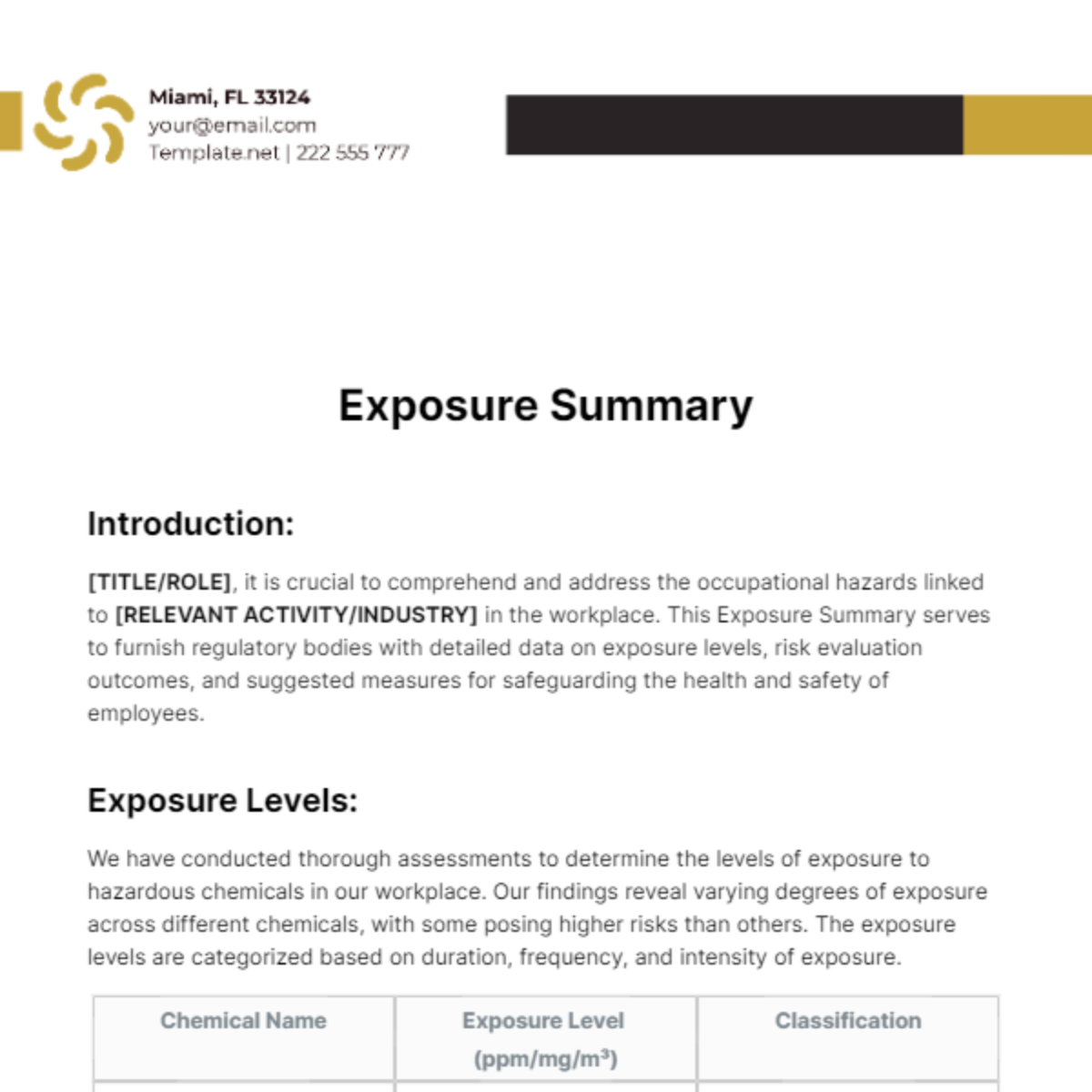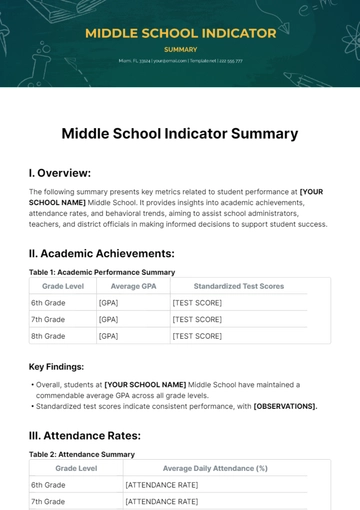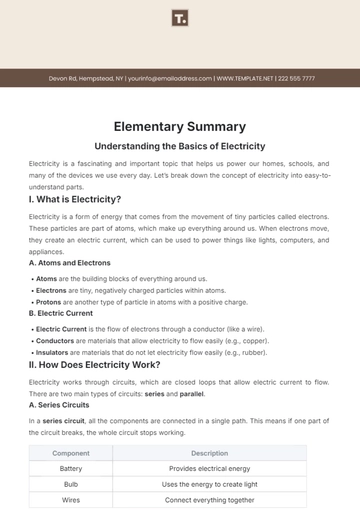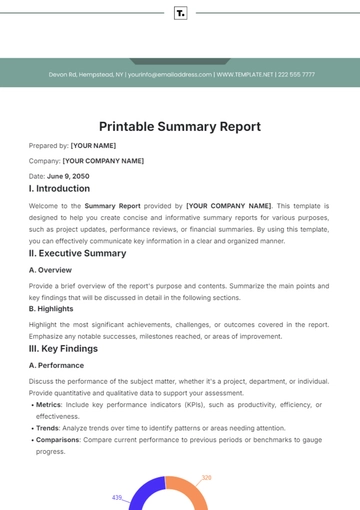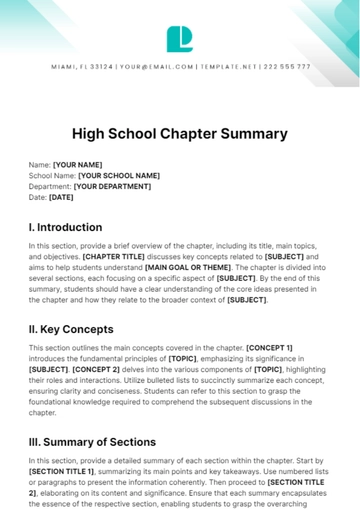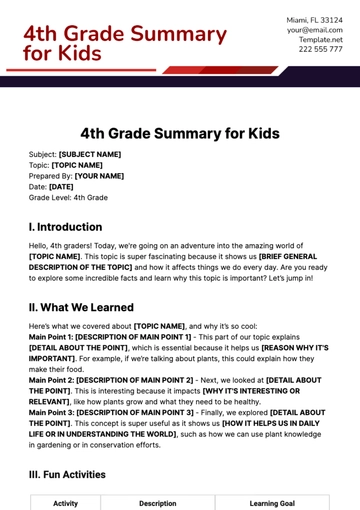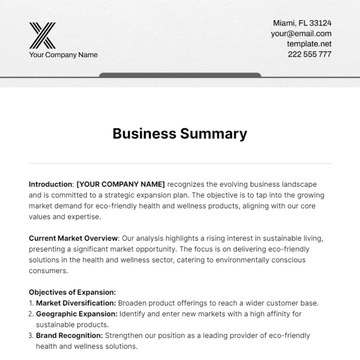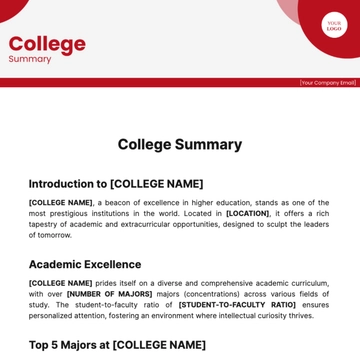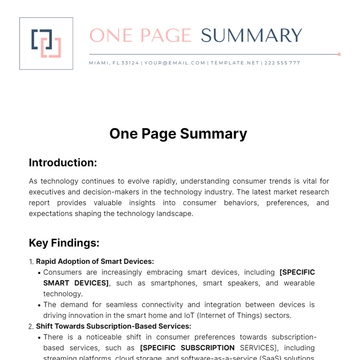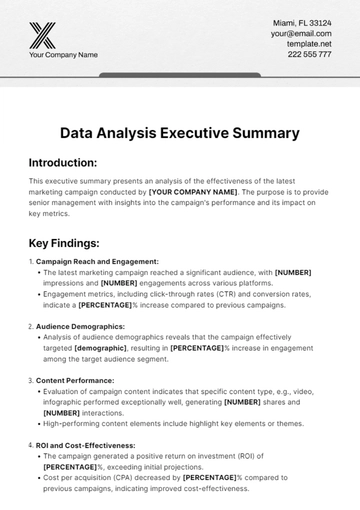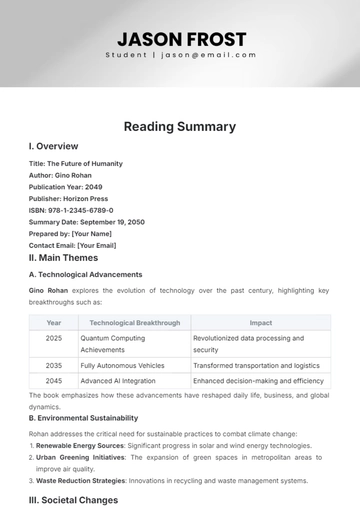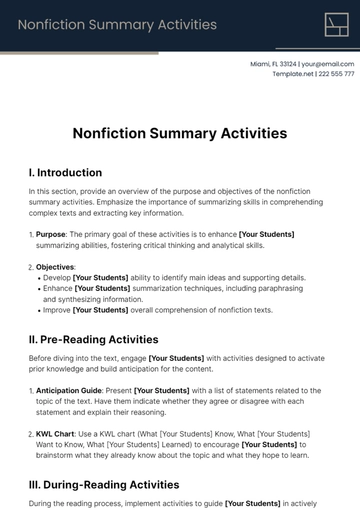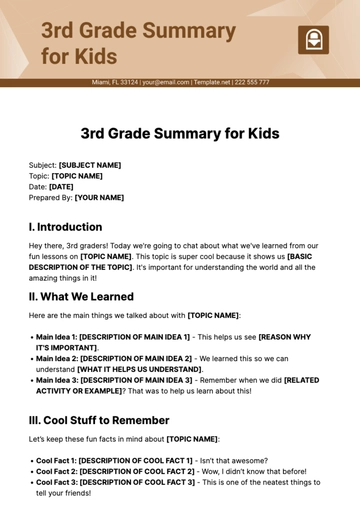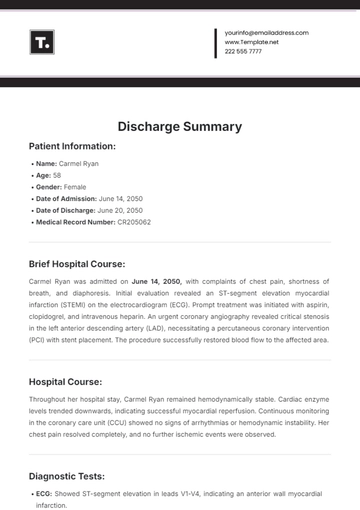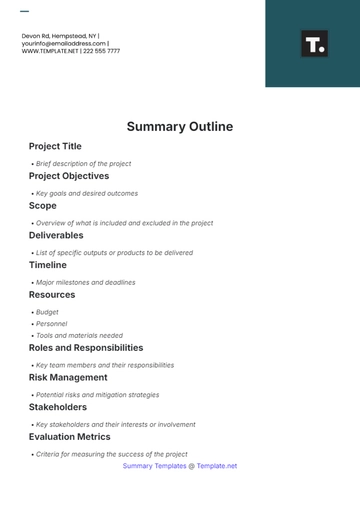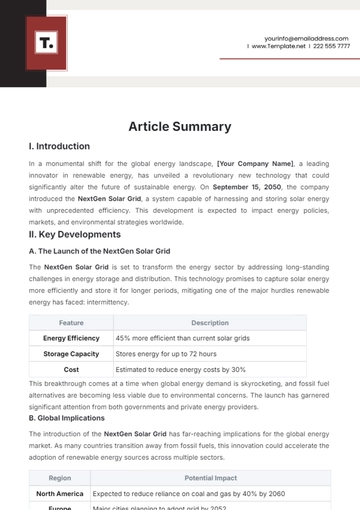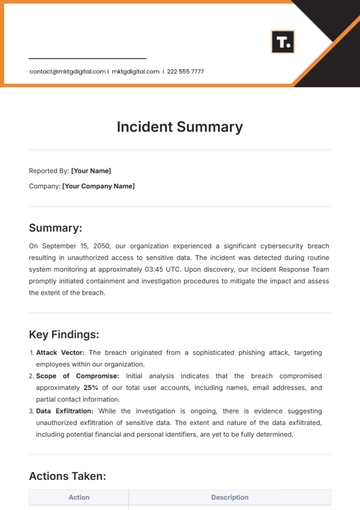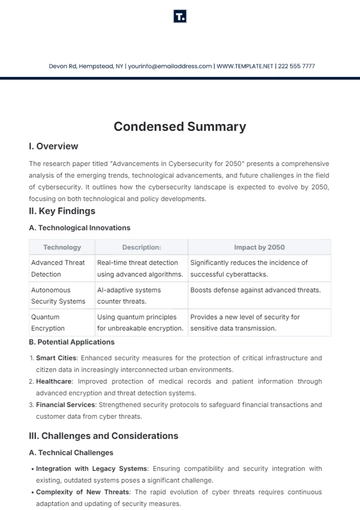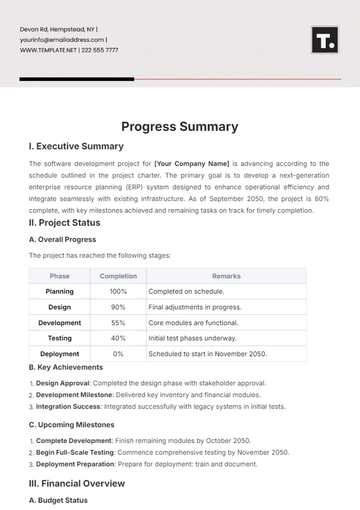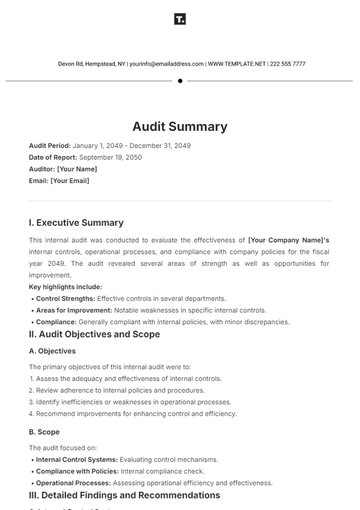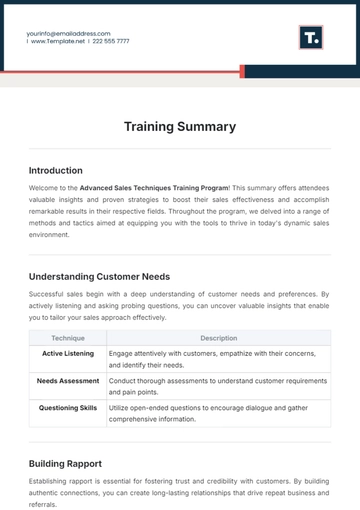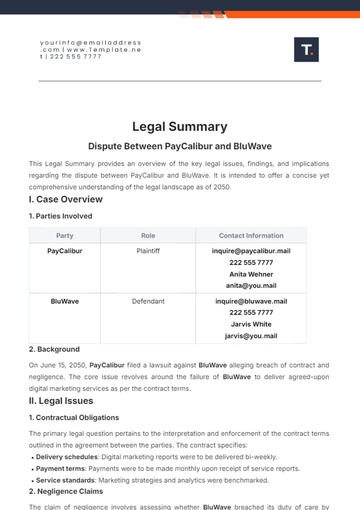Exposure Summary
Introduction:
[TITLE/ROLE], it is crucial to comprehend and address the occupational hazards linked to [RELEVANT ACTIVITY/INDUSTRY] in the workplace. This Exposure Summary serves to furnish regulatory bodies with detailed data on exposure levels, risk evaluation outcomes, and suggested measures for safeguarding the health and safety of employees.
Exposure Levels:
We have conducted thorough assessments to determine the levels of exposure to hazardous chemicals in our workplace. Our findings reveal varying degrees of exposure across different chemicals, with some posing higher risks than others. The exposure levels are categorized based on duration, frequency, and intensity of exposure.
Chemical Name | Exposure Level (ppm/mg/m³) | Classification |
|---|
Chemical A | 10 ppm | Highly Hazardous |
Chemical B | 5 mg/m³ | Moderate Hazard |
Chemical C | 25 ppm | Low Hazard |
Risk Assessment Findings:
Our risk assessment process involves identifying potential hazards, evaluating exposure risks, and determining the likelihood and severity of adverse effects. Through meticulous analysis, we have identified the following findings:
Chemical A: This chemical presents a significant risk of acute toxicity and respiratory irritation. Prolonged exposure can lead to serious health complications such as respiratory disorders and central nervous system depression.
Chemical B: While not as hazardous as Chemical A, prolonged exposure to Chemical B can still result in adverse health effects, including skin irritation and respiratory sensitization.
Chemical C: Although classified as low hazard, Chemical C still poses risks to workers, particularly regarding eye and skin irritation. Proper handling and ventilation measures are essential to minimize exposure.
Recommended Mitigation Strategies:
To mitigate the occupational risks associated with handling hazardous chemicals, we propose the following strategies:
Engineering Controls: Implementing engineering controls such as [SPECIFIC VENTILATION SYSTEMS] and [CONTAINMENT MEASURES] to minimize airborne exposure and maintain safe working environments.
Administrative Controls: Establishing proper work practices, including regular training sessions on [SPECIFIC CHEMICAL HANDLING PROCEDURES], use of personal protective equipment (PPE), and adherence to [SAFETY PROTOCOLS].
Personal Protective Equipment (PPE): Providing workers with appropriate PPE such as [GLOVES], [GOGGLES], and respirators to minimize direct contact and inhalation of hazardous chemicals.
Chemical Substitution: Whenever feasible, substituting hazardous chemicals with [LESS TOXIC ALTERNATIVES] to reduce exposure risks without compromising productivity.
Conclusion:
In conclusion, this Exposure Summary highlights the occupational exposure risks associated with handling hazardous chemicals in the workplace and outlines effective mitigation strategies to ensure the safety and well-being of workers. By implementing the recommended controls and practices, we are committed to creating a safer work environment and mitigating potential health hazards.
Summarized By: [YOUR NAME]
Summary Templates @ Template.net
